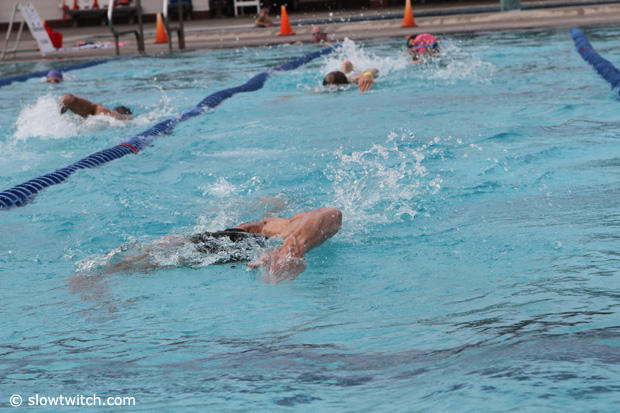What do I do with my hands while swimming?
It seems like a simple question. Yet, I am surprised by how many people don’t quite know what to do with their hands either underwater on the pull or above water on the recovery. For both parts of the stroke cycle, it is important that you know.
Doc Counsilman, one of the greatest swim coaches of all time at Indiana University, used to say that the difference between a great swimmer and a not-so-great swimmer was the sensitivity one had in the fingers. Great swimmers could feel the water and pressure better than the others, he reasoned. He was right. The sensitivity in the fingers is one of the key elements of becoming an efficient swimmer. It is what enables a swimmer to maximize the power one can generate in the underwater arm pull.
Too many swimmers try too hard with their hands. Or perhaps they were taught wrong. I see many swimmers cup their hands like they are holding a scoop of ice cream during the pull, keeping the fingers and thumb tightly pressed together. The most effective way to pull through the water is with the fingers and thumb separated slightly. What we are trying to do is maximize the effective surface area of our hand.
By separating the fingers slightly, the flow of water that passes through this area between the fingers is turbulent and slow. In other words, the hand acts as if it were as large as the entire area of the hand and the small spaces between the fingers. Spread the fingers too much and the flow becomes laminar and fast and the hand then acts like it has holes in it. Cup the hands with the fingers together and you will reduce the effective surface area of your hand to the actual surface area of your hand and fingers.
Want proof? Just try sculling in deep water hard, moving your hands back and forth briskly, trying to lift yourself high in the water. First do this drill with your hands cupped, fingers together. Then try it with the fingers spread slightly apart. Then, finally, try the same drill with the fingers spread far apart. You will feel rather significant differences in the forces you can generate doing this sculling motion with the three different hand positions. The winner is with the fingers spread slightly.
Eddie Reese, famous coach from the University of Texas, likens the underwater pull to pulling with a bear’s paw. When he sees a swimmer pulling underwater with the bear paw, he knows he’s looking at a talented swimmer. I also like to think of bending the distal part of the ring and pinkie fingers slightly during the underwater pull, as if I am pushing the ends of those two fingers into a soft stick of butter. Whether it is a bear paw or butter, do what makes you feel the water better.
What about the recovery? My former Master’s coach in Phoenix, Olympic gold medalist Troy Dalbey, used to always tell me to recover with soft hands. What he meant by that was to fully relax the hands on the recovery. Whether one swims with a straight-arm or bent-arm recovery, either way, the hands and wrist should be completely loose and relaxed. One of my favorite drills for this is to stop the arm midway in the freestyle recovery, when it is sticking more or less straight up, then shake the wrist several times until it is completely loose, then complete the recovery arm stroke. The arm should then be fully extended or very close to it, before the hand enters the water for the next pull.
Forget about the old way of sliding the hand into the water in front of the head and then extending it forward. Keep your arm in air as long as you can. The drag coefficient in air is miniscule compared to water, with a density some 800 times greater than air.
The other old-school habit that bothers me is what I call the modern-toilet-seat-syndrome. Most of us have seen these new toilet seats that have a spring that slows them down and keeps them from slamming against the toilet when dropped. Many swimmers I teach enter their hands into the water just like these new toilet seats. They slow down the arm just before the hand enters the water, hoping to avoid all of those terrible air bubbles they’ve heard about. The problem is that by slowing their arm recovery and the hand entry, their stroke rate slows and they seem to get just as many air bubbles as when they let their arms rip and throw their hands forward aggressively. The ability to get rid of those nasty air bubbles has more to do with what one does with the hand after it gets into the water and the sensitivity in the finger tips than it does with the speed of the hand as it enters the water.
So forget about being delicate. Let your arms rip through the recovery with relaxed wrist and hands. Enter the water with full extension…or close to it. Then get ready for another good underwater pull with a high elbow, feeling the water as well as you can.
Want to see some of the great swimmers’ hands underwater? Check out our videos on our website at www.theraceclub.com.
Yours in swimming,
Gary Sr.


